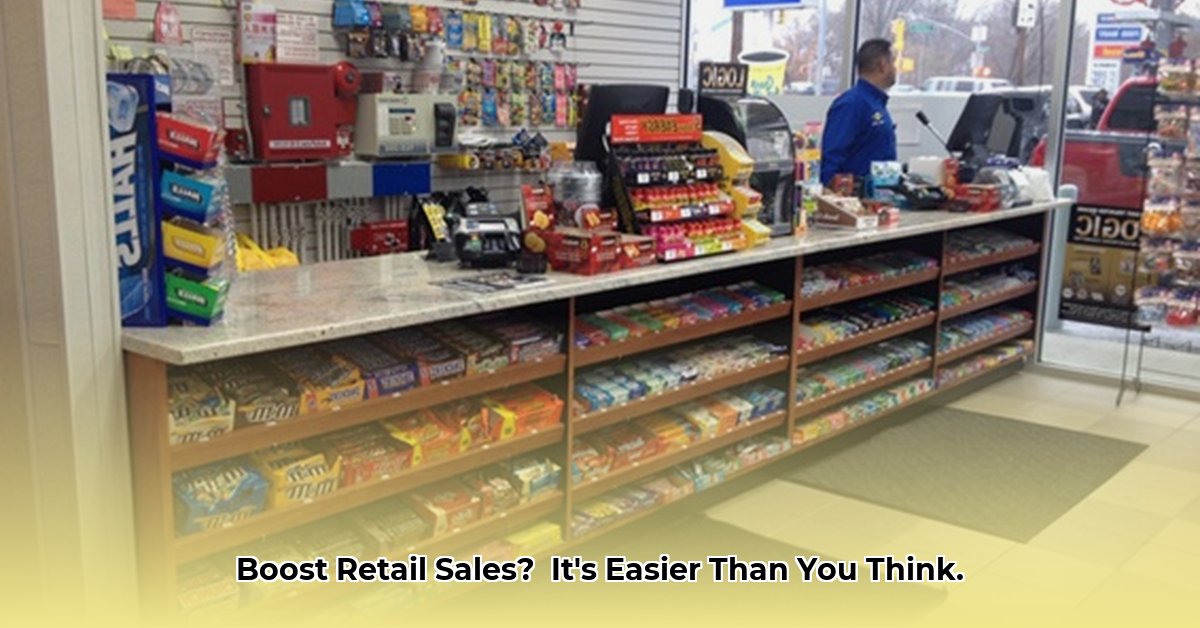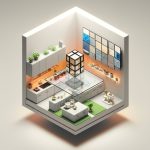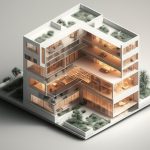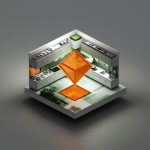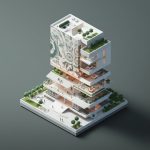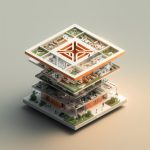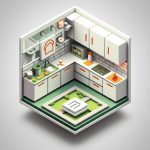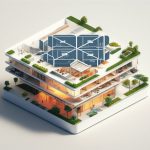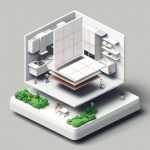Is your retail counter merely a transaction point, or is it a dynamic engine driving sales and enhancing customer experience? In today’s competitive landscape, a strategically designed counter can significantly impact your bottom line. This article explores how to transform your checkout area into a high-performance sales hub, covering everything from counter layouts and material selection to technology integration and merchandising strategies. Discover how to optimize your retail space to boost revenue and create lasting impressions. For comfortable seating in your retail space, consider ergonomic seating options.
Retail Counter Design: A Catalyst for Sales and Customer Flow
Your retail counter is a powerful brand ambassador and a pivotal touchpoint in the customer journey. Does your current setup reflect your brand identity and maximize sales, or does it create bottlenecks and frustrate customers? A purposeful retail counter design can revolutionize your store’s operations and boost profitability. It’s an investment in customer experience and efficiency, not just an expense. Are you ready to unlock your store’s potential with a customer-centric design?
Many businesses suffer from outdated counters that fail to meet modern shopper expectations. Today’s customers demand spaces that are adaptable, efficient, and visually appealing. Modular designs provide the flexibility to adapt your store layout for seasonal promotions, new product launches, or a fresh aesthetic. This adaptability improves workflow and creates a more engaging customer experience. How can modular designs integrate seamlessly into your business model to drive tangible results?
Material Mastery: Style Meets Durability
The selection of counter materials involves a careful balance of aesthetic appeal and long-term durability. Solid surface countertops, like quartz or acrylic, are popular choices due to their elegant appearance and robust construction, offering resistance to scratches, stains, and impacts. Laminate provides a cost-effective alternative with a wide range of colors and patterns, but it may not withstand heavy use as effectively. Consider the long-term costs associated with maintenance and potential replacement. Are you maximizing the lifecycle value of your countertops?
Consider how your counter materials reflect your brand’s values and overall store aesthetic. Do they reinforce your brand’s image and create a welcoming atmosphere? The right materials communicate your brand personality and foster a positive customer experience, creating a lasting impression. It’s all about achieving a seamless and cohesive experience that resonates with your target audience.
Designing for Dollars: Optimizing Space and Efficiency
Checkout counters are high-traffic zones, and every square inch matters. Clever design can drastically improve your sales and operational efficiency. Let’s explore how to maximize your counter space by incorporating smart merchandising strategies and workflow optimization techniques. Are you ready to make a lasting and profitable impression on your customers?
- Strategic Merchandising: Capitalize on impulse buys by placing strategically selected products near the checkout area. Consider smaller, high-margin items that customers might add to their carts at the last minute, such as candy, travel-sized toiletries, or phone accessories. Analyze your sales data to identify the most effective impulse items for your business.
- Effective Lighting: Bright, consistent lighting showcases your products and creates an inviting atmosphere. LED lighting is an energy-efficient and visually appealing option, enhancing the visibility of your merchandise and improving the overall customer experience. Use warmer tones for a more inviting feel, or cooler tones to create a modern, sleek atmosphere.
- Streamlined Workflow: Analyze and optimize the movement of staff and customers to eliminate unnecessary steps and improve transaction times. Consider the placement of your POS system, cash drawer, and bagging area to minimize bottlenecks and streamline the checkout process.
A well-designed counter enhances the user experience for both staff and customers, reducing wait times and increasing overall satisfaction. Paying attention to reach zones, access points, and clear visibility streamlines operations and fosters a positive environment. Even small adjustments can lead to significant improvements in efficiency and customer satisfaction.
Tech Integration: Revolutionizing the Retail Counter
Integrating technology into your counter can significantly enhance efficiency and customer experience. According to industry data, stores that implement integrated technology solutions often see a noticeable increase in customer satisfaction and repeat business. Are you ready to embrace this technological shift?
- Seamless Payment Systems: Faster payment processing leads to shorter lines and happier customers. Offer a variety of payment options, including contactless payments, mobile wallets, and traditional credit card processing. Research and select a system that offers robust security features and integrates seamlessly with your POS system.
- Intelligent Inventory Management: Real-time inventory data minimizes stockouts and prevents overstocking, saving money and reducing frustration. Implement an inventory management system that automatically tracks sales and adjusts stock levels, providing you with accurate and up-to-date information.
- Dynamic Digital Signage: Use high-resolution displays to promote sales, highlight new products, and showcase engaging content. Digital signage can attract attention, inform customers, and drive impulse purchases. Consider displaying customer testimonials, promotional videos, or interactive product demonstrations.
Technological upgrades streamline operations and significantly enhance the overall shopping experience, creating a modern and tech-savvy environment that meets the evolving demands of today’s shoppers.
Your Retail Counter Transformation: A Step-by-Step Plan
Here’s a practical plan to guide you through upgrading your retail counter:
- Assess Your Current Setup: Conduct a thorough evaluation of your existing counter. Identify its strengths and weaknesses, considering factors such as functionality, aesthetics, and customer flow.
- Define Your Goals: Clearly define your objectives for the upgrade. Are you aiming to improve workflow, increase sales, strengthen your brand image, or enhance the customer experience?
- Explore Your Options: Research different materials, designs, technology integrations, and merchandising strategies. Gather inspiration from other retailers and consult with industry experts.
- Establish a Budget: Set a realistic budget that accounts for materials, labor, technology, and potential unforeseen expenses.
- Choose a Reliable Partner: Select a reputable manufacturer or vendor with positive reviews, solid references, and a proven track record.
- Implement and Evaluate: Install your new counter and closely monitor the results. Track key performance indicators (KPIs) such as transaction times, sales figures, and customer satisfaction scores. Be prepared to adapt and improve your counter setup as needed.
Remember, counter upgrades are an ongoing process. Continuously adapt and refine your counter setup as your business evolves and customer preferences change.
The Future of Retail Counters: A Glimpse into Tomorrow
Future retail counters will likely be more technologically advanced, offering personalized and seamless shopping experiences. Artificial intelligence (AI) may be used to personalize product recommendations, optimize pricing, and even assist customers with their purchases. Sustainability will also be a key focus, with retailers increasingly using eco-friendly materials and implementing sustainable practices. Embrace these positive changes for your business.
By embracing these advancements, your retail counter can transform from a simple transaction point into a dynamic hub that drives sales, builds customer loyalty, and positions your business for long-term success.
Selecting the Ideal Modular Retail Counter System for Your Small Business
Key Takeaways:
- Counter design directly impacts sales and customer experience, influencing the overall trajectory of your business.
- Modular systems offer flexibility for evolving needs, adapting alongside your growth.
- Material choice balances aesthetics, durability, and budget, allowing you to cater to diverse consumer needs.
- Technology integration streamlines operations and enhances engagement, enabling you to adopt technological advancements.
- Careful planning optimizes space and workflow, minimizing customer frustration and boosting employee efficiency.
Needs Assessment: Building a Solid Foundation
Before selecting a modular system, carefully assess your business needs and goals. What is your retail style? What is your budget? What kind of customer experience do you want to create? Consider factors such as store size, product type, target audience, and sales volume. A thorough self-assessment is crucial for choosing the right modular retail counter system.
Material Prioritization: Blending Design with Durability
Choosing the right materials is paramount. Laminates offer versatility and affordability, but they may be less durable than solid surface materials. Wood provides warmth and a high-end feel, while metal offers a sleek and modern aesthetic. Consider factors such as durability, maintenance requirements, and aesthetic appeal. Select materials that align with your business goals and brand identity.
Workflow Optimization: Integrating Seamless Functionality
Effective counter design optimizes workflow, not just aesthetics. Focus on the strategic placement of POS systems, cash drawers, bagging areas, and product displays. Ensure easy access to essential items and minimize unnecessary movements for both staff and customers. What innovative solutions can contribute to seamless functionality?
Technology Integration: Smart Counter Solutions
Consider integrating cutting-edge technologies like advanced payment systems, interactive customer displays, and barcode scanners to significantly improve efficiency and enhance the customer experience. Realistically assess your needs, prioritizing features that directly enhance the customer experience and streamline operations. Overly complex systems can be counterproductive, so start with the essential features and gradually add more advanced functionalities as needed.
Modular Design Benefits: Adaptability for Growth
Modular systems offer unparalleled adaptability, allowing you to easily reconfigure your counter setup to meet your evolving business needs. Add or remove sections as necessary, adapting your layout for seasonal promotions, new product lines, or changing customer traffic patterns. This flexibility makes modular systems a particularly attractive choice for businesses seeking long-term growth and scalability.
Key Performance Indicators (KPIs): Measuring Success
After implementing a new counter system, monitor key performance indicators (KPIs) such as transaction times, sales figures, customer satisfaction scores, and employee productivity. Regularly evaluate how well the counter meets your needs, identify areas for improvement, and make data-driven adjustments.
Decision Matrix: Weighing Pros and Cons
| Feature | Pros | Cons |
| ———————— | ——————————————————————————————————————————————————————
- Glass Backsplash: Ideas For a Stylish Kitchen Update - December 2, 2025
- Glass On Tile: A Stylish Kitchen Backsplash Option - December 1, 2025
- Glass Tiles for Kitchen: Style and Durability Tips - November 30, 2025
